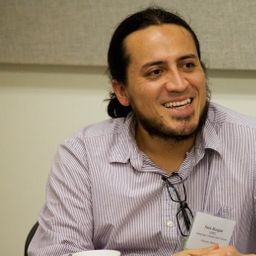09.20 Exploring Memory and Memorialization in the midst of Colombia’s Armed Conflict
My Session Status
Colombians have suffered for more than sixty years under the on-going armed conflict, which is the confrontation between guerrilla organizations, the Colombian state (represented in the armed forces), and paramilitary groups (which have had undeniable links with the military forces and some of the Colombian economic elites). Since 1985 more than 200,000 civilians have lost their lives because of the conflict, and more than 5,000,000 people have suffered directly the consequences of war. Most of the fighting and deaths occur in rural areas or in zones where the presence of the state and its institutions are absent. City dwellers perceive the conflict in a different manner as most of the confrontation occurs outside city borders, and the reports about war make the urban populations think of the conflict as a problem that belongs to a few. Peace talks between the FARC-EP and the Colombian state in Havana, Cuba, have gradually make Colombians think of the possibility of finding an end to war. The negotiation has made mass media, governmental and non-governmental institutions, and academia to ask: how will Colombians participate in the post-conflict? How will the Colombian society accept its difficult past and find paths of reconciliation?
Transition, reconciliation and reparation are concepts that have become part of the language in the current political environment of the country. However, as Das and Kleinman (2001) ask “all of this sounds interesting, but can it be real? Do, in fact, broken communities that have been fractured by war and structural violence ever regenerate? Or are these simply the official words needed to authorize political processes of normalization that themselves merely prevent the ultimate defeat and stanch social hemorrhage and chaos until a later time?” We must recognize that sixty years of violent confrontation are difficult to leave behind.
As the negotiations in Havana continue, the Colombian government decreed laws and provided resources aimed to benefit the victims of violence. In this legalistic context, the construction of memory constitutes part of the general plan to assign responsibilities to the actors of the conflict, to dignify and symbolically repair the victims of violence, and to connect victims’ narratives with the everyday activities of those who have not directly experienced the armed conflict. This paper will analyze memory as both a concept and a government mandated process. In particular, the paper will examine the physical artifacts of memory and memorialization in murals, exhibitions, and museological activities. The public usually encounters the materialization of memory in memorials. Even as the conflict continues in rural areas, the work of remembering and most of the memorials are located in urban centres—far away from the conflict. The argument is that memory is in danger to become as a “buzzword” in the political, academic, and cultural fields of the country. Different projects that each of these sectors promote do not lack commitment to the work of memory and memorialization. The voices involved in projects seeking to include the victims of the armed conflict do not have a hidden agenda. Therefore, I will pay attention to some of the shortcomings and potential problems that exist in the gaps of these projects.
